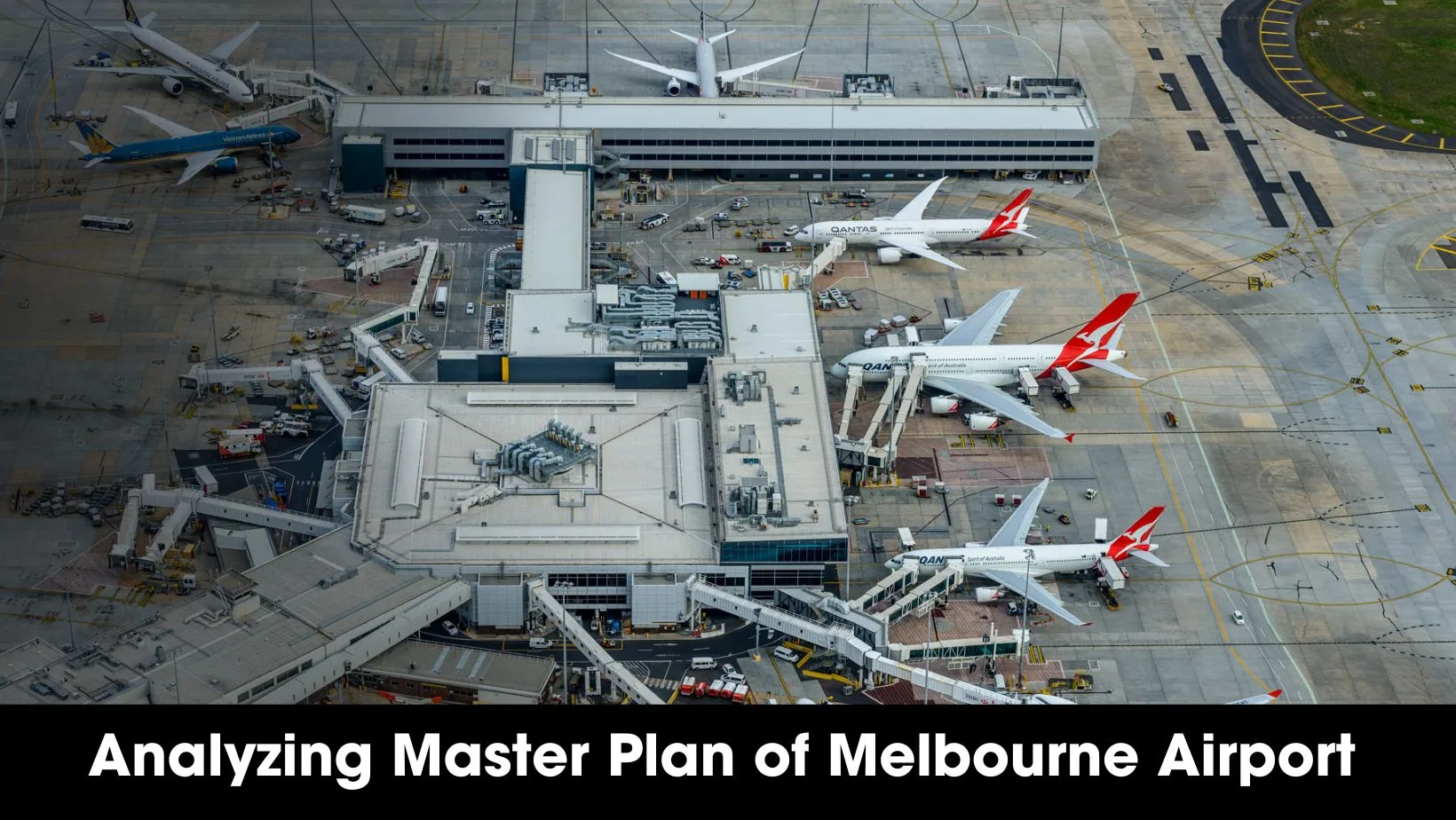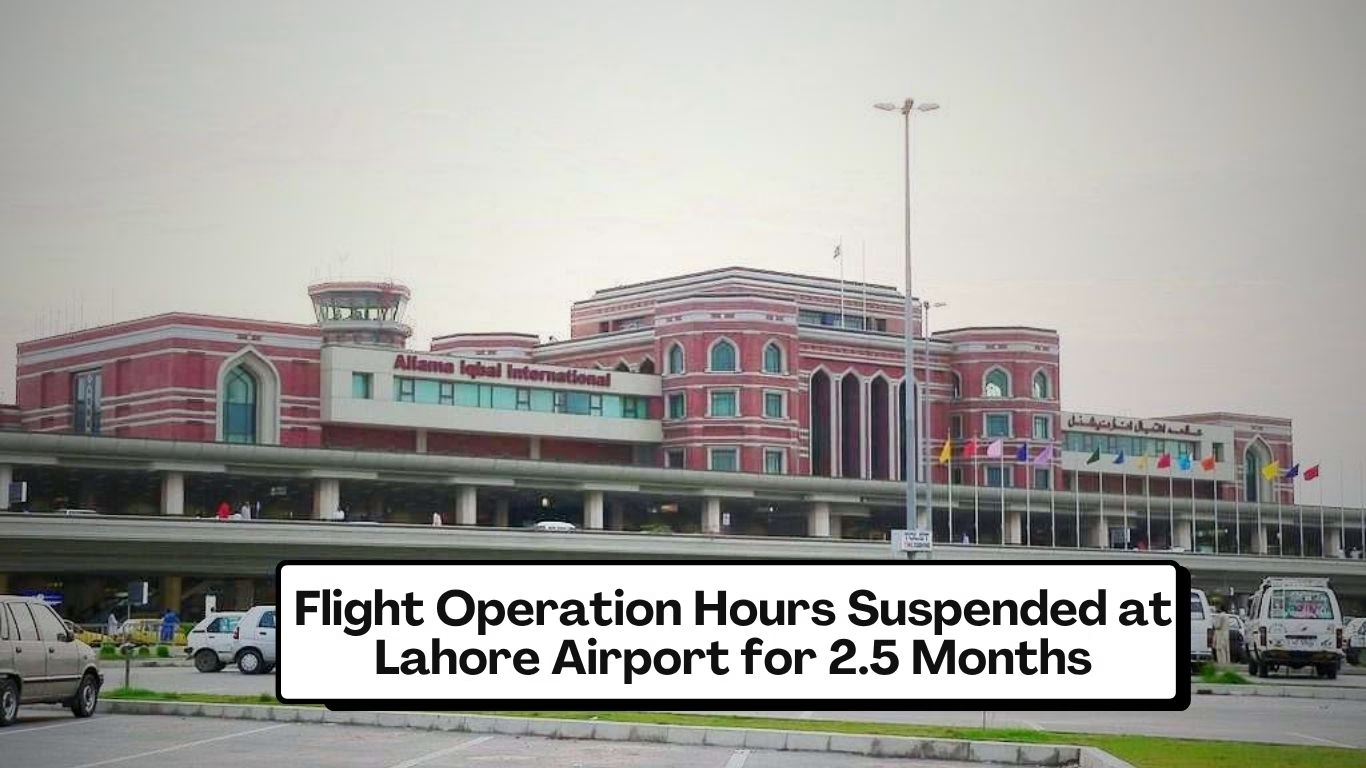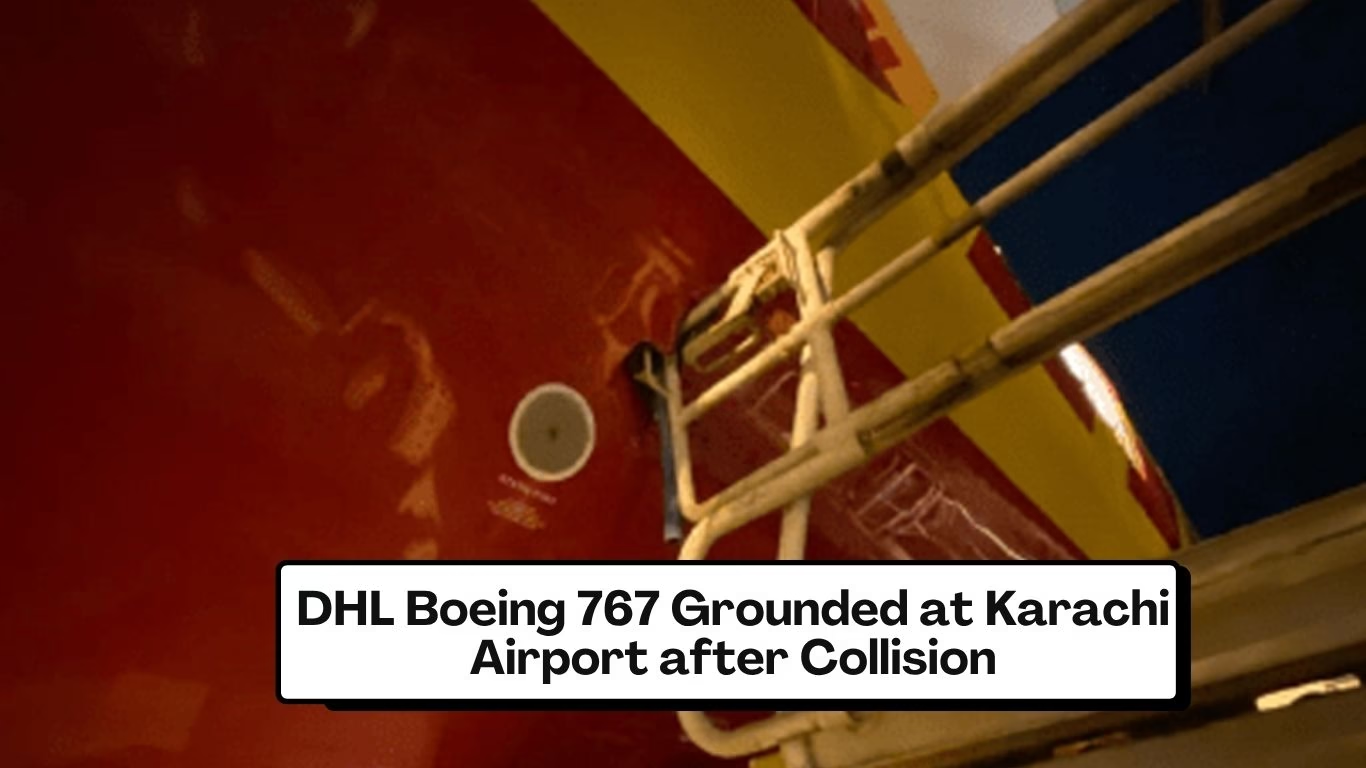Background
Melbourne Airport is the second busiest airport in Australia that has been operating for over 50 years. It is considered as the main aviation hub for the northern part of the country. It has four terminals that features direct flights to 33 domestic destinations (Connecting Victoria to the world since 1 July 1970 | Melbourne Airport).
For the next five years, the airport’s ongoing development is outlined in detail in its Master Plan. These plans are in line with the airport’s Master Plan, which outlines a 20-year strategic direction and takes into account necessary modifications to ground transportation, aviation facilities, utility infrastructure, non-aviation development, and environmental measures (Master Plan | Melbourne Airport, 2022).
Forecast Growth
In 2018-19, more than 37 million passengers and almost 320,000 tonnes of international freight passed through the airport. This 20-year Master Plan for 2042 forecasts annual passenger numbers to get double that is 76 million. Aircraft movements (arriving and departing flights) during this period are also predicted to increase to more than 429,000 movements. Total domestic and international air freight is predicted to more than double to 980,000 tonnes. The number of vehicles arriving at or departing from Melbourne Airport will reach 270,000 on a typical busy day (Melbourne Airport Facts & Figures, 2022).
Key Factors Influencing the Master Plan
Airport master plans have to take a holistic approach, defining specific objectives that complement the airport’s broad vision and represent the values of the communities around it (Airport Planning and Terminal Design, 2018). The highest priority should be given to passenger and airport safety. The performance of the airport depends on its infrastructure, especially its landside access. Customer feedback is essential for planning future advancements, and in order to support expansion, airports need to address issues (Ramirez, 2019).
The master plan offers a guide for the following (Airport Design and Operation: Third Edition | Emerald Insight, 2015):
- Development of facilities.
- Usage and development of land surrounding the airport.
- Assessment of the environmental effects of airport development.
- Determination of ground access needs.
Connectivity
Melbourne Airport expects to handle 68 million passengers and 740,000 aircraft movements by 2038. The infrastructure planning for the airport, such as the development of terminals, runways, roads, rail, car parks, cargo, and other facilities to enhance the connectivity at the airport.
Sustainability
The environmental and social impacts of the airport operations and expansion, such as noise, air quality, greenhouse gas emissions, biodiversity, heritage, and community engagement. Provide economic and social benefits to the local community and Victoria through long-term sustainable growth and investment.
Regulatory compliance
The regulatory and policy framework of the airport, such as the compliance with the Airports Act 1996, the Airports (Environment Protection) Regulations 1997, the Airports (Protection of Airspace) Regulations 1996, and other relevant laws and standards. Ensure development maintains a safe and secure operating environment.
Growth
The strategic vision and objectives of the airport, such as enhancing customer experience, improving connectivity and accessibility, fostering innovation and sustainability, and supporting the aviation industry. Meeting the need for the aviation in a growing national economy and also facilitate the needs of the airline community at the airport.
Airside Requirements
- Taxiways: Melbourne Airport has initiated the ‘Taxiway Zulu Project’. As part of this project, the airport is working to extend Taxiway Victor, aiming to enhance taxiing operations (Airside Development, 2022).
- Aprons:Melbourne Airport has undertaken the ‘Foxtrot Apron Works’ project that involved the construction of two additional wide-body capable stands, providing more capacity for larger aircraft. Additionally, the project has included the installation of hydrant refueling capabilities for four wide-body stands, supporting busing operations. These upgrades to the apron infrastructure enhance the airport’s operational capabilities and support the efficient handling of aircraft.
- Maintenance: Melbourne Airport has focused on pavement and asphalt maintenance to ensure the longevity and safety of its airfield surfaces. Maintenance works have included pavement replacement on Taxiway Bravo, as well as the utilization of expedient pavement on Taxiway Sierra-Uniform, Taxiway Kilo, Taxiway Alpha, and stand D12. These maintenance efforts contribute to the overall quality and reliability of the airport’s airside infrastructure.
- AirsideSecurity:To strengthen security measures, the airport has made improvements to gate access points, specifically at Gate 22 and 27. The Airport has also implemented upgrades to the perimeter security fence, further enhancing the overall airside security measures in place.
- Other: Melbourne Airport has implemented new airside access (Northern Access Route), expanded equipment storage, upgraded airfield lighting with LED lights, and purchased Ambulifts for seamless assistance to individuals with reduced mobility.
Landside Requirements
Landside requirements are the rules and regulations that apply to the vehicles and drivers that operate within the landside area of an airport. The landside area is the part of the airport that is accessible to the public, such as the parking, check-in, and baggage claim areas. Landside requirements for Melbourne Airport are (Ground Transport Plan, 2022)
Terminals
- Terminal 1: Melbourne Airport has purchased Terminal 1 from Qantas and reached a new agreement with the airline for the operation of the terminal. This acquisition and agreement for Terminal 1, allows efficient operations and service provision for airlines and passengers (Melbourne Airport reaches new agreement with Qantas | Melbourne Airport, 2019).
- Terminal (International):The introduction of new self-service check-in facilities, allowing passengers to check in more efficiently and integrating the latest next-generation security screening technology, ensuring effective and effective security procedures. Furthermore, the development of T2 Luxury retail aims to provide an enhanced shopping experience for international passengers. The expansion of the arrivals hall and increased passenger bussing capacity further support the smooth flow of travelers
- Terminal 3 Melbourne: Airport has made improvements to Terminal 3 to enhance passenger convenience and satisfaction. This includes the implementation of improved self-service check-in facilities, enabling passengers to check in quickly and independently. New retail tenancies have been introduced, offering a diverse range of shopping options to enhance the overall passenger experience within Terminal 3.
- Terminal 4: Terminal 4 has seen advancements in security screening technology, with the introduction of the latest next-generation systems. These systems provide efficient and effective security screening processes, ensuring the safety and security of passengers and their belongings. Additionally, travelators have been installed to improve the passenger experience, facilitating the movement of individuals to and from Pier G within Terminal 4.
Business Park
Melbourne Airport has allocated 25 hectares for further development within the Business Park. This expansion includes the construction of eight additional commercial facilities, providing opportunities for businesses to establish a presence within the airport precinct.
The Hive Precinct (opposite at Terminal 4 Car Park)
The Hive precinct has seen significant development, including the construction of a 464-room hotel. This hotel features a wellness center, conference rooms, a pool, gym, cafe, bar, and restaurant facilities. The development of The Hive precinct aims to provide convenient and comfortable accommodation options for travelers, further enhancing the overall airport experience.
Functional Management Issues
Functional management is the process of planning, organizing, coordinating, and controlling the activities and resources of an organization to achieve its objectives and goals. Some of the functional management issues for Melbourne Airport are (Guideline for effective stakeholder management, 2022).
- Diverse Stakeholder Management:
- Challenge: Melbourne Airport engages with a wide array of stakeholders, including local communities, government agencies, airlines, industry partners, multicultural communities, and various forums.
- Functional Management Issue: Effectively managing and responding to the diverse needs, expectations, and concerns of these stakeholders requires a sophisticated and adaptable approach.
- Cultural and Linguistic Diversity:
- Challenge: The engagement participation data highlights gaps in representation, especially among people of culturally and linguistically diverse (CALD) backgrounds (Diversity and Inclusion | Melbourne Airport).
- Functional Management Issue: Ensuring inclusivity and engagement with CALD communities requires specific strategies, such as building relationships with multicultural officers, translating materials, and leveraging a diverse workforce for communication.
2. Online Engagement Transition:
- Challenge: The shift to an online engagement program, particularly due to the impact of COVID-19, presented both challenges and opportunities.
- FunctionalManagementIssue: Adapting to online engagement requires addressing technological challenges, ensuring accessibility, and finding ways to extend local participation beyond the immediate airport community.
- Alignment with Regulatory Requirements:
- Challenge: Melbourne Airport is required under the Airports Act to consult with the community and key stakeholders on the five-yearly Master Planning process.
- Functional Management Issue: Compliance with regulatory requirements necessitates a strategic and comprehensive approach to engagement, ensuring that the airport meets legal obligations while fostering positive relationships with stakeholders.
5. Government Engagement:
- Challenge:Melbourne Airport must engage extensively with Commonwealth and Victorian government departments for the endorsement of the Master Plan.
- FunctionalManagementIssue:Building and maintaining relationships with government entities, facilitating key briefings, and aligning the Master Plan with government priorities are critical aspects of functional management.
Analysis (Recommendation)
Melbourne Airport, faces the challenge of accommodating increasing passenger and cargo traffic while ensuring operational efficiency, environmental sustainability, and stakeholder satisfaction. To address these challenges, the airport’s should focus on integrating advanced air traffic control technology for enhanced safety and efficiency in airside operations (Melbourne Airport, 2022).
On the landside, developing a comprehensive transportation hub that seamlessly connects the airport with various modes of public and private transport is crucial. Australian aviation likely explores the changes in travel patterns and airline demand due to the introduction of HSR. It might assess factors like reduced air travel on routes paralleled by HSR, shifts in passenger preferences, and possible environmental and economic effects of this transportation shift (The potential impact of High Speed Rail development on Australian aviation, 2019). The functional management issues can be tackled by strengthening stakeholder engagement through digital platforms, investing in workforce development, and implementing agile responses to changing regulations.
Airports are key drivers in economic restructuring, leading to diversified and service-oriented landside development (Australian Airports and Local Economic Development, 2022). Passengers from the City of Melbourne are likely to use offsite baggage drop facilities, especially if the transit cost is around AU$ 20 and the travel time is no more than 20 minutes. This indicates a high potential adoption rate for the use of offsite baggage drop facilitates at Melbourne airport (Investigating strategic local placement for an offsite baggage dr…: Ingenta Connect, 2021).
The airport needs a third runway going north-south and a fourth one going east-west to handle more flights and make operations smoother. Also, they need to improve passenger and cargo terminals, transportation access, and facilities like aircraft maintenance (Airport Layout Plan for Efficient Airport Design, 2018)..

Marking Structure
Melbourne Airport Regulatory factors
Regulatory factors are crucial for safeguarding airports and their surrounding land. The National Airports Safeguarding Framework (NASF) provides regulatory principles and guidelines to protect Australian airports’ ongoing operations (National Airports Safeguarding Framework principles and guidelines, 2018) with aims to prevent incompatible land use, minimize community impacts, integrate land use decisions, protect green wedges, and facilitate future growth.
Melbourne Airport Policies and Processes
The regulatory factors considered in ensuring on-airport developments meet the safeguarding requirements at Melbourne Airport are:
- Development Approval Process: The development approval process outlined in Section 8 of the Master Plan incorporates the requirements of the Airport Act, including major development plan and building control requirements. This ensures that on-airport developments comply with the relevant regulatory standards.
- Melbourne Airport Planning and Urban Design Strategy: This strategy is used to assess on-airport development proposals and incorporates requirements derived from the National Airports Safeguarding Framework (NASF) guidelines. It ensures that development plans align with safeguarding principles and guidelines.
- Contractor Guide to Working at Melbourne Airport: This guide provides contractors with information about the general requirements for working at Melbourne Airport. It ensures that contractors adhere to specific regulations and safety standards while conducting their work on the airport premises.
- MelbourneAirportPlantingGuidelines:These guidelines provide information on suitable plant species for planting in close proximity to the airport. They help ensure that vegetation around the airport does not interfere with flight paths, bird strikes, or other aviation safety concerns.
- MelbourneAirportManual:Prepared in accordance with Melbourne Airport’s obligations under the Civil Aviation Safety Regulations Part 139, the manual outlines specific operational and safety procedures for airport activities.
Victorian Government Planning Policies and Controls
The regulatory factors considered in the Victorian government policies and controls to protect Melbourne Airport from potential adverse effects of off-airport developments are (Airport Planning & regulation, 2018).
- MelbourneAirportEnvironsStrategyPlan(MAESP): These provide strategic planning and control mechanisms for managing development within the Melbourne Airport Environs Area. They aim to ensure compatible land use and safeguard the airport’s operations.
- Planning Policy Framework clause 18.02-7S: Airports and airfields: This clause within the Planning Policy Framework establishes specific provisions for managing the impacts of off-airport developments on airports and airfields. It strengthens the implementation of the National Airports Safeguarding Framework (NASF) guidelines (Airport legislation and regulation, 2023).
- Planning Policy Framework clause 18.02-7R: This clause outlines specific planning provisions for the protection and management of Melbourne Airport. It ensures that development proposals within the airport’s vicinity align with the safeguarding requirements.
- Urban Growth Boundary and the Green Wedges: These planning mechanisms help regulate urban expansion and protect green wedges surrounding Melbourne Airport. They aim to prevent incompatible development and preserve the airport’s operational integrity.
- Plan Melbourne 2017–2050: This long-term strategic plan for the metropolitan area considers the role of Melbourne Airport and its integration with the surrounding region. It guides land use planning and development decisions to support the airport’s ongoing operations.
- MelbourneAirportEnvironsOverlay(MAEO):This overlay imposes specific planning controls and restrictions on development within the airport’s environs. It helps protect the airport from incompatible land uses and ensures compliance with the safeguarding requirements (Melbourne Airport Environs Overlay, 2023).
The regulatory factors mentioned above reflect the Victorian government’s commitment to safeguarding Melbourne Airport by implementing appropriate planning policies, controls, and overlays. These measures aim to maintain the airport’s curfew-free status, mitigate potential impacts from off-airport developments, and support the airport’s ongoing operations.
Environmental Factors/Considerations
Environmental Management
As part of its Environmental Management Framework, Melbourne Airport’s 2022 Master Plan seeks to establish the airport as a pioneer in environmental management for Australian transportation and logistics facilities. This approach places a strong emphasis on ongoing development and risk adaptation to the environment. It covers handling cultural heritage assets, managing and keeping an eye on environmental compliance, safeguarding ecological communities, and controlling contamination of land and groundwater.
Sustainability in planning and design
Melbourne Airport has integrated sustainability elements (Environment Strategy, 2022). into its procurement policy, installed smart meters to monitor potable water consumption, and established an on-site water treatment plant for reuse of treated water. These initiatives demonstrate the airport’s commitment to sustainable practices, resource conservation, and environmental stewardship.
Energy and carbon
Melbourne Airport has achieved Level 2 Airport Carbon Accreditation by Airports Council International, acknowledging its commitment to reducing carbon emissions. The airport has set carbon emission targets and developed a comprehensive carbon management plan to drive emission reduction efforts. In line with this commitment, Melbourne Airport has constructed and operates three solar panel systems to contribute to carbon emission reduction. These systems include a 12MW solar farm at Oaklands Junction, a 5MW rooftop system at the Agility Warehouse, and a stand-alone system dedicated to powering the on-site Water Treatment Plant. Melbourne Airport’s trigeneration system, decrease CO2 emissions by 920,000 tonnes over 15 years (Mitigating an Airport’s Carbon Footprint Through the Use of “Green” Technologies: The Case of Brisbane and Melbourne Airports, Australia, 2021).
Land and water management
Melbourne Airport has implemented a PFAS Management Framework endorsed by the Commonwealth regulator, ensuring consistent environmental practices. The airport has also constructed a containment facility for managing contaminated soils and a water treatment plant (Defence PFAS Construction and Maintenance Framework, 2023).
Air quality and ground-based noise
Melbourne Airport implemented an Air Quality Monitoring Plan and improved event alerts for potential regulatory threshold breaches. It explores alternative fuel sources for airside equipment and promptly addresses community ground-based noise complaints
Waste management
Melbourne Airport prioritizes waste management and resource recovery in construction projects, achieving high recycling rates. Materials like asphalt profiling are reused across different projects. The airport is finalizing a strategy to minimize quarantine waste disposal through increased recycling, resulting in reduced landfill waste and lower disposal costs (Environment Strategy, 2022).
Operational Factors
Runway System Expansion
Melbourne Airport has long-term plans to expand its runway system by adding two additional runways to the existing configuration. These new runways are intended to accommodate the projected increase in air traffic and support the airport’s future growth and operational capacity.
Priority Runway Selection
Initial plan was to prioritize the development of a parallel east-west runway as the third runway. This decision was based on factors such as anticipated demand, operational efficiency, and airspace considerations. However, following an extensive consultation process involving stakeholders from the aviation industry, government, regulators, and the community, Melbourne Airport announced a change in its preferred option. The airport decided to nominate the north- south runway as the priority for the third runway development (The world’s first purpose-built Airport City: Melbourne Airport, Tullamarine, 2016).
Aircraft Noise Assessment
To adequately capture the potential noise effects before and after the construction of the new runways, a composite Australian Noise Exposure Forecast (ANEF) has been prepared. ANEF is a system that quantifies and predicts aircraft noise levels around airports. In this case, a composite ANEF has been developed to represent the noise contours for different stages of development and runway configurations. The ANECs (Australian Noise Exposure Contours) represent specific scenarios and are used to model and analyze the noise impacts associated with each stage of the runway development(Australian Noise Exposure Forecast, 2022).
Conclusion
The Melbourne Airport Master Plan 2022 has been prepared to support the continued growth of Melbourne Airport as Victoria’s principle 24/7 international airport. As Australia’s second largest airport, Melbourne Airport contributes to economic activity across Australia. The airport plays a key role for Australian tourism and export industries and is a major hub for employment in Melbourne. The Master Plan responds to forecast long-term aviation growth, maintaining and improving a safe and secure airport environment. By acting in a responsible and sustainable manner, the airport will continue to deliver significant, long-lasting economic, employment and social benefits to Victoria, and across Australia.
References
- Melbourneairport. Connecting Victoria to the world since 1 July 1970 | Melbourne Airport. [online] Available at: <https://melbourneairport.com.au/corporate/connecting-victoria-to-the- world-since-1-july-1970> [Accessed 27 December. 2023].
- Ramirez , N., 2019, Airport Strategic Planning; Master Planning: An Exploratory Research Project . Digital. [online] Available at <https://digital.library.txst.edu/server/api/core/bitstreams/0f8d3ffc-11d9-40f0-ad85- f0366d09c08d/content> [Accessed 03 January. 2024].
- Melbourneairport. 2022. Master Plan | Melbourne Airport. [online] Available at: <https://melbourneairport.com.au/corporate/master-plan> [Accessed 27 December. 2023].
- Emerald. 2015, August 05. Airport Design and Operation: Third Edition | Emerald Insight. [online] Available at: <https://emerald.com/insight/publication/doi/10.1108/9781784418694> [Accessed 03 January. 2024].
- Melbourneairport. 2019, May 08. Melbourne Airport reaches new agreement with Qantas | Melbourne Airport. [online] Available at <https://melbourneairport.com.au/corporate/melbourne-airport-reaches-new-agreement-with- qantas> [Accessed 05 January. 2024].
- Melbourneairportguide. 2022. Melbourne Airport Facts & Figures. [online] Available at <https://melbourneairportguide.com/statistics/#:~:text=25%2C674%2C692%20passengers %20used%20Melbourne%20Airport%20in%202022%20representing,increase%20of %2018.91%25%20compared%20to%20October%202022%20%282%2C535%2C678%29.> [Accessed 27 December. 2023].
- Melbourneairport. 2022. Melbourne Airport 2022 Master Plan approved. | Melbourne Airport. [online] Available at: <https://melbourneairport.com.au/corporate/melbourne-airport-2022- master-plan-approved> [Accessed 27 December. 2023].
- Assets-au-01. 2022. Airside Development. [online] Available at: <https://assets-au-01.kc- usercontent.com/be08d7b0-97a1-02f9-2be6-a0c139c3c337/88b7a88e-5592-4457-89ef- 330dd219d2e8/2022MP-Airside-Development%20v2.pdf> [Accessed 29 December. 2023].
- Assets-au-01. 2022. Ground Transport Plan. [online] Available at: <https://assets-au-01.kc- usercontent.com/be08d7b0-97a1-02f9-2be6-a0c139c3c337/0fa5aa8b-ee26-4251-8fba- 5ef191fe3a9f/2022MP-Ground-Transport-Plan%20v2.pdf> [Accessed 29 December. 2023].
- Planning. 2022, March . Guideline for effective stakeholder management. [online] Available at: <https://planning.vic.gov.au/guides-and-resources/guides/all-guides/guideline-for-effective- stakeholder-management> [Accessed 29 December. 2023].
- Infrastructure. 2018. Airport planning & regulation. [online] Available at: <https://infrastructure.gov.au/infrastructure-transport-vehicles/aviation/airports/airport-planning- regulation> [Accessed 29 December. 2023].\
- Assets-au-01. 2022. Environment Strategy. [online] Available at: <https://assets-au-01.kc- usercontent.com/be08d7b0-97a1-02f9-2be6-a0c139c3c337/64a8ec9f-dd5f-48b9-ab62- 8d30e270af57/2022MP-Environment%20Strategy%20v2.pdf> [Accessed 29 December. 2023].
- Assets-au-01. 2022. Australian Noise Exposure Forecast. [online] Available at: <https://assets- au-01.kc-usercontent.com/be08d7b0-97a1-02f9-2be6-a0c139c3c337/2768780b-2971-429a-b4dc- f41de111a0b0/2022MP-Noise-Exposure-Forecast%20v2.pdf> [Accessed 29 December. 2023].
- Defence. 2023, May . Defence PFAS Construction and Maintenance Framework. [online] Available at: <https://defence.gov.au/business-industry/industry-governance/industry- regulations/defence-pfas-construction-and-maintenance-framework> [Accessed 29 December. 2023].
References 2
- Melbourneairport. Diversity and Inclusion | Melbourne Airport. [online] Available at: <https://melbourneairport.com.au/corporate/diversity-and-inclusion> [Accessed 29 December. 2023].
- Planning. 2023, January . Airport legislation and regulation. [online] Available at: <https://planning.vic.gov.au/guides-and-resources/guides/all-guides/airports/airport-planning- and-development-legislation> [Accessed 29 December. 2023].
- Planning. 2023, January . Melbourne Airport Environs Overlay. [online] Available at: <https://planning.vic.gov.au/guides-and-resources/guides/all-guides/airports/melbourne-airport- environs-overlay#:~:text=The%20Melbourne%20Airport%20Environs%20Overlay %20%28MAEO%29%20is%20a,The%20MAEO%20reflects%20the%20airport%27s %20planned%20four-runway%20layout.> [Accessed 29 December. 2023].
- Ingentaconnect. 2021. Investigating strategic local placement for an offsite baggage dr..: Ingenta Connect. [online] Available at: <https://ingentaconnect.com/content/hsp/cam/2021/00000015/00000004/art00006> [Accessed 31 December. 2023].
- Researchgate. 2021. Mitigating an Airport’s Carbon Footprint Through the Use of “Green” Technologies: The Case of Brisbane and Melbourne Airports, Australia. [online] Available at: <https://researchgate.net/profile/Glenn-Baxter/publication/356175450_Mitigating_an_Airport’s_ Carbon_Footprint_Through_the_Use_of_Green_Technologies_The_Case_of_Brisbane_and_Melbourne_Airports_Australia/links/618ede5b3068c54fa5db763d/Mitigating-an-Airports-Carbon- Footprint-Through-the-Use-of-Green-Technologies-The-Case-of-Brisbane-and-Melbourne- Airports-Australia.pdf> [Accessed 31 December. 2023].
- Tandfonline. 2022, August . Australian Airports and Local Economic Development. [online] Available at: <https://tandfonline.com/doi/full/10.1080/10630732.2022.2090204? casa_token=1M8upyoH_X0AAAAA%3AhluE0 VXmMQVLcenm_o0tub0j9oD4Q6UMemCAEjVVEMJcNemAc9POX7zdF9uKPy4e8Lpx86r9 Nc9OiU> [Accessed 31 December. 2023].
- Sciencedirect. 2019, July . The potential impact of High Speed Rail development on Australian aviation. [online] Available at: <https://sciencedirect.com/science/article/abs/pii/S0969699719300067> [Accessed 31 December. 2023].
- Tandfonline. 2016, December 12. The world’s first purpose-built Airport City: Melbourne Airport, Tullamarine. [online] Available at <https://tandfonline.com/doi/full/10.1080/02665433.2016.1262787? casa_token=f9c9CjTkbq8AAAAA %3A_nwk9On7R_FLTTQkJqakd7ufFYqr25PGmM5XKYAM0L2TdVVVkS6kpzIt2oyLdAMtl n5TM-LQdp7VJow> [Accessed 11 January. 2024].
- Researchgate. 2018, April . Airport Layout Plan for Efficient Airport Design. [online] Available at <https://researchgate.net/publication/324692341_Airport_Layout_Plan_for_Efficient_Airport_D esign> [Accessed 11 January. 2024].
- McGrath, ., 1996, February 1, The effect of the 3rd runway on property values. search.informit.org. [online] Available at:
- <https://search.informit.org/doi/abs/10.3316/ielapa.961111147> [Accessed 11 January. 2024].
- Icao. 2018 November Airport Planning and Terminal Design. [online] Available at:
- <https://icao.int/MID/Documents/2018/RGS%20WG5/RGS5-PPT4-Airport%20planning- Sudan.pdf> [Accessed 11 January. 2024].
- Assets-au-01. 2022. Environment Strategy. [online] Available at: <https://assets-au-01.kc- usercontent.com/be08d7b0-97a1-02f9-2be6-a0c139c3c337/64a8ec9f-dd5f-48b9-ab62- 8d30e270af57/2022MP-Environment%20Strategy%20v2.pdf> [Accessed 11 January. 2024].






Leave a Reply